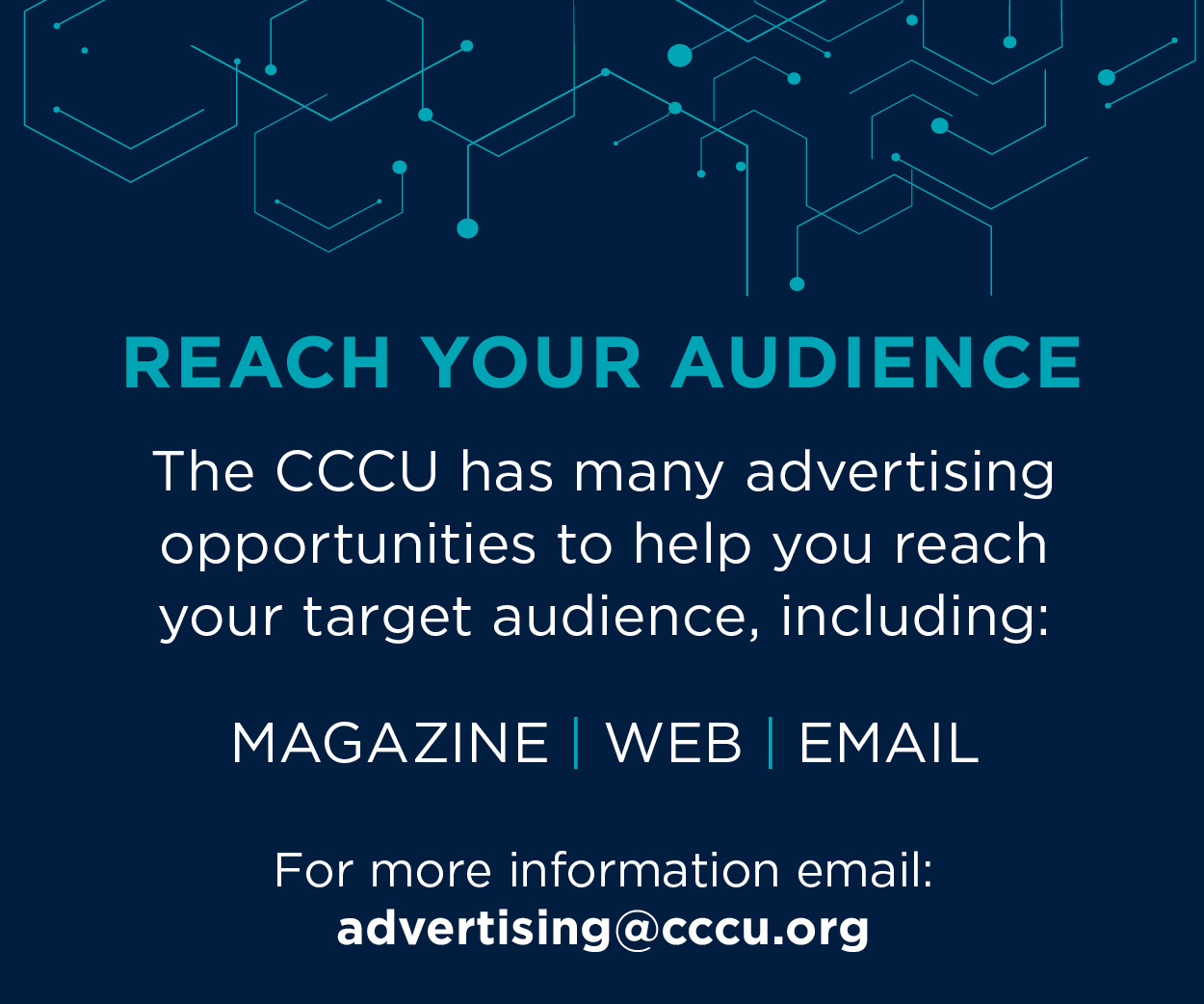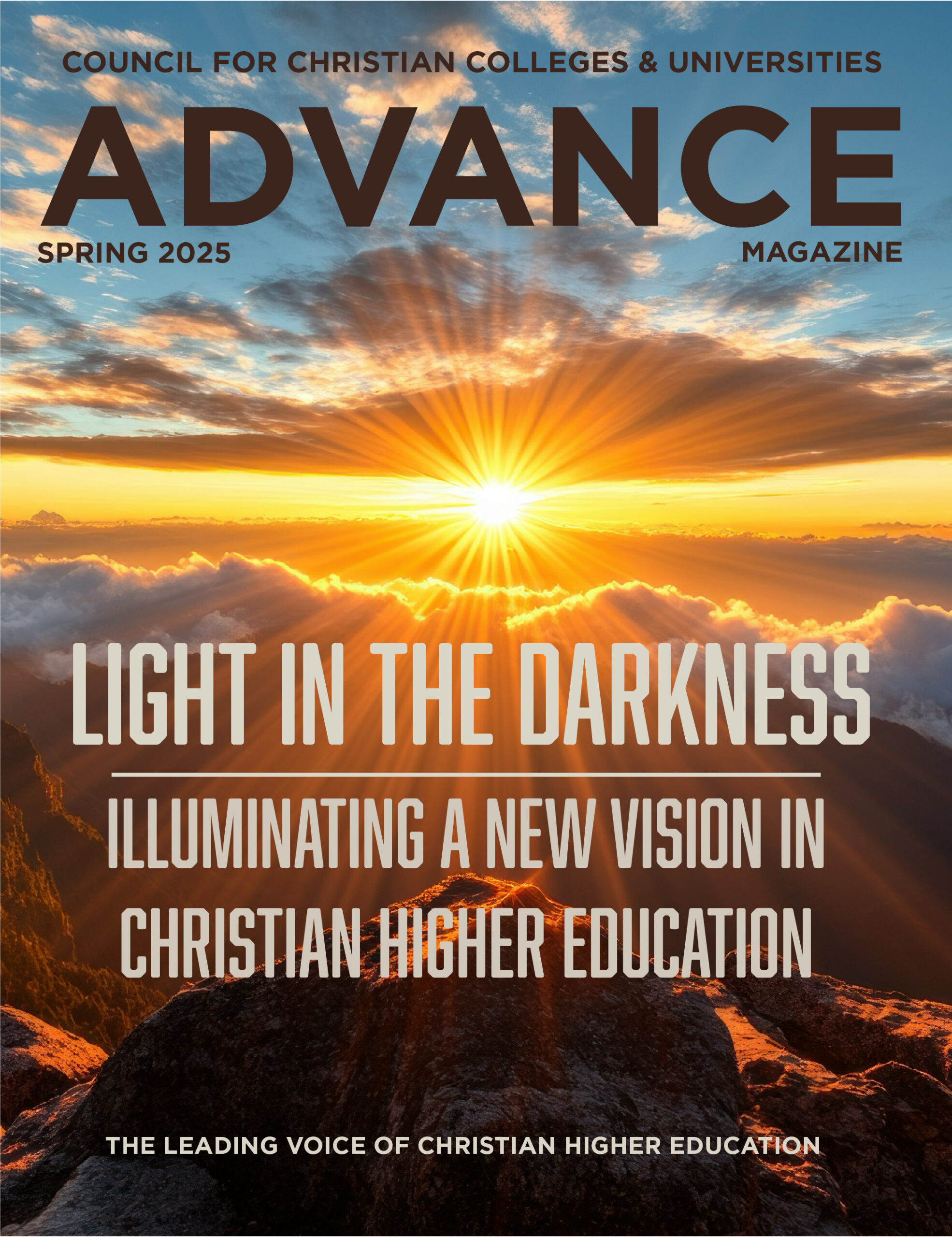Magazine
As March and April approach every 12 months, more than one admissions director considers quitting. Sleep is sacrificed to anxiety: Are application numbers up? Down? Will jobs be on the line? Will their job be on the line?
The encroaching enrollment cliff is no comfort.
Once a threat on the horizon, the inevitable change of landscape is close enough now for universities to peek over the edge. The level of panic the view incites depends on the conversations and roadmapping that have taken place within institutions up to this point. The possibilities are challenging, but they are not hopeless.
To summarize the enrollment cliff:
- Due to falling birth rates since the Great Recession in 2007, 2025 holds the peak number of high school graduates before a gradual decline leads to approximately 13% (or nearly 500,000) fewer graduates by 2041. Twelve states and the District of Columbia are exceptions.
- Public perception of higher education also has fallen. The need for college and university degrees is in question, including in families that traditionally have sent their children to college. The cost of education factors in, as some feel the cost is disproportionate to the benefit—or they simply cannot afford it. Hispanic and biracial students are the exception, with growing numbers attending college.
- Fallout from COVID-19, increased political turmoil, changing demographics, and long-held internal structures and policies within institutions further complicate the issue and options.
While “enrollment cliff” provides dramatic visuals, “slow decline in population” is closer to the truth. But beware of using this as cause for continuing business as usual. The decline has begun. Colleges and universities can survive and thrive, but only if they adapt. A number of CCCU members began adjusting their course years ago, learning from their own and others’ educational experiments and innovating for the future.
Geography Matters
Projections point to the Northeast, Midwest, and West sustaining the greatest declines in high school graduates. Fertility rates are lower in these regions, fewer families are moving there, and resident high school students are considering colleges in warmer climates.
With a decrease in the enrollment pool, location also matters to colleges and universities surrounded by multiple higher education options. Smaller Christian institutions may not have the financial resources of nearby competitors, but they offer a unique mission, integrating faith and learning; they have the ability to form strong bonds between faculty, staff, and students; and they have the agility to create beneficial partnerships within their local community.
For instance, in 2024, Trinity Christian College (Palos Heights, IL), established a partnership for their nursing program with Northwestern Medicine Palos Hospital. Northwestern Medicine funds the final two years of tuition and hosts clinical rotations for nursing students. In return, the students commit to three years of employment at the hospital after graduation. The hospital builds an employee base; the students gain extensive experience and lower debt, and have guaranteed employment post-graduation.
Howard Payne University (Brownwood, TX) is reaching outside of their local community, forming an enrollment pipeline beginning with elementary students. In February of this year, HPU announced partnerships with Carroll Independent School District (Southlake, TX) and Santa Fe Christian School (Santa Fe, NM) that guarantee automatic acceptance for students in the top 50 percent that graduate with a GPA of 3.5 or higher. The Gold and Blue Partnership program includes a scholarship valued at $60,000 over eight semesters.
Adjusting for the Nontraditional Student
According to Dr. Amanda Staggenborg, the CCCU’s vice president for communications, the difference for the colleges and universities that are thriving is that they are willing to embrace new programs and opportunities. “These schools realize the opportunities to expand their graduate and doctoral programs and create micro-credentialing certificate programs, in addition to providing more opportunities for online learning.”
Indiana Wesleyan University (IWU; Marion, IN) began a new partnership this year with Advanced eClinical Training to provide online, short-term healthcare training.The collaboration expands IWU’s educational offerings, giving students access to comprehensive healthcare training content—particularly beneficial for working students to gain new skills or advance their careers.
IWU also formed partnerships with the Cincinnati State Community College System and Ivy Tech Community College that allow community college students to transfer to IWU online programs. Transferring students receive a 15% discount on all online bachelor’s and associate-to-master’s degrees, with a special $250 per-credit-hour rate for RN-BSN students. Cincinnati State students also may transfer up to 90 credits toward an online Bachelor of Science degree.
Linking Arms
Some CCCU institutions are joining forces to strengthen their programs. Students earning a Bachelor of Science degree in counseling and psychology at Mid-Atlantic Christian University (MACU; Elizabeth City, NC) may be eligible for credit toward a Master of Social Work at Dordt University (Sioux Center, IA).
“The partnership will allow MACU grads interested in social work to streamline the process of getting into the field,” says Dr. David King, professor of counseling at MACU. “This will add more Christian social workers to the workforce and allow our students to become productive members of society sooner.”
In addition to benefiting the universities and students, the partnership highlights the beauty of the Church working together across denominational lines; Dordt is affiliated with Christian Reformed Church, and MACU with Christian Churches and Church of Christ.
Asbury University (Wilmore, KY) is taking advantage of its proximity to a large state school. Prior to launching their own Bachelor of Science in nursing degree (beginning this fall), Asbury joined forces with University of Kentucky (UK) for dual enrollment. Once Asbury students complete an Asbury bachelor’s degree, they can transfer with preferred admission to the UK College of Nursing for a Bachelor of Science in Nursing (BSN) in under five years.
The schools put a similar agreement in place in 2023 for a Doctor of Pharmacy degree, which guarantees its students up to five seats per year in UK’s program. Asbury students finish their Bachelor of Arts in biology – pre-pharmacy, then transfer to UK to complete the doctoral program.
The Question of Thriving
Whether the enrollment decline is swift or gradual, the question is one of thriving. The institutions that are merely surviving will face even greater challenges. Staggenborg suggests paying attention to two areas:
- Identify challenge areas for enrollment and retention within particular programs. Then take action to adapt programs’ content, structure, or access points for prospective students.
- What and how is the university communicating? From the time a student steps on the campus as a freshman until they leave as a senior and then afterwards, it’s a constant living relationship with the university. The university gives flexibility and autonomy to the student to make choices for their career, while infusing the faith-based element. Consistently communicating the uniqueness of this relationship and the success stories that flow out of it remind the constituency that this is a place they want to help thrive.
New ideas for recruitment, enrollment, and return on investment (ROI) are often discussed and debated, with differing resolutions and projections. Universities must be mindful of messaging confusion and mission drift. Institutions that thrive are willing to listen and adapt, valuing diverse voices, skill sets, and expertise while faithfully remaining steadfast in their Christian mission.
CCCU Members Have an Edge
Writing for Forbes in January 2025, David Rowsowsky (Arizona State University, Senior Advisor to the President) said mission matters. Topping his 2025 wish list for higher education, he wrote, “We hope that colleges and universities lead with distinctiveness, not just rankings and ROI…. We hope they lean-in and lead in ways that align best with their mission, stakeholders, and audience… rather than just copy others. We hope they make their values matter by aligning their curricula, student experiences, institutional priorities and investments. We hope they break the pattern of homogenization that has diminished higher ed’s accessibility, reputation, and most importantly value.”
People are drawn to a mission.
Enrollment—and perhaps even more so, retention—relies on communicating your mission clearly and living out the promises your mission makes. When schools attract students (and parents of students) who align with their lived mission, they are more likely to stay. At CCCU institutions, degrees are necessary and worthwhile, but always undergirded by the desire to know, love, and serve Christ and others.
In a 2024 piece by Sara Weissman, Inside Higher Ed reported that small religious colleges are increasing, not decreasing, their numbers. In an interview with Weissman, CCCU president David Hoag acknowledged that higher education is currently “under a microscope” and, in that context, institutions that are “leading with their Christian mission and their values” appeal to many students and families.
The history of higher education is one of innovation and adaptation, responding to anxiety-causing shifts in population, market demand, technology, and unexpected external challenges, like the COVID-19 pandemic. Through each challenge, Christian colleges and universities have adapted accordingly, embraced opportunities, and flourished in their mission. In this moment, standing at the edge of the enrollment cliff, it is time to thoughtfully strategize and innovate as Christian higher education prepares to step into the ever-changing future.
__________
Kimberly Felton has lived and worked in the Pacific Northwest for 30+ years, writing for international nonprofits such as Luis Palau Association and Medical Teams International. Her freelance writing has been published by George Fox University, Oregon State University, Christianity Today, and others.




